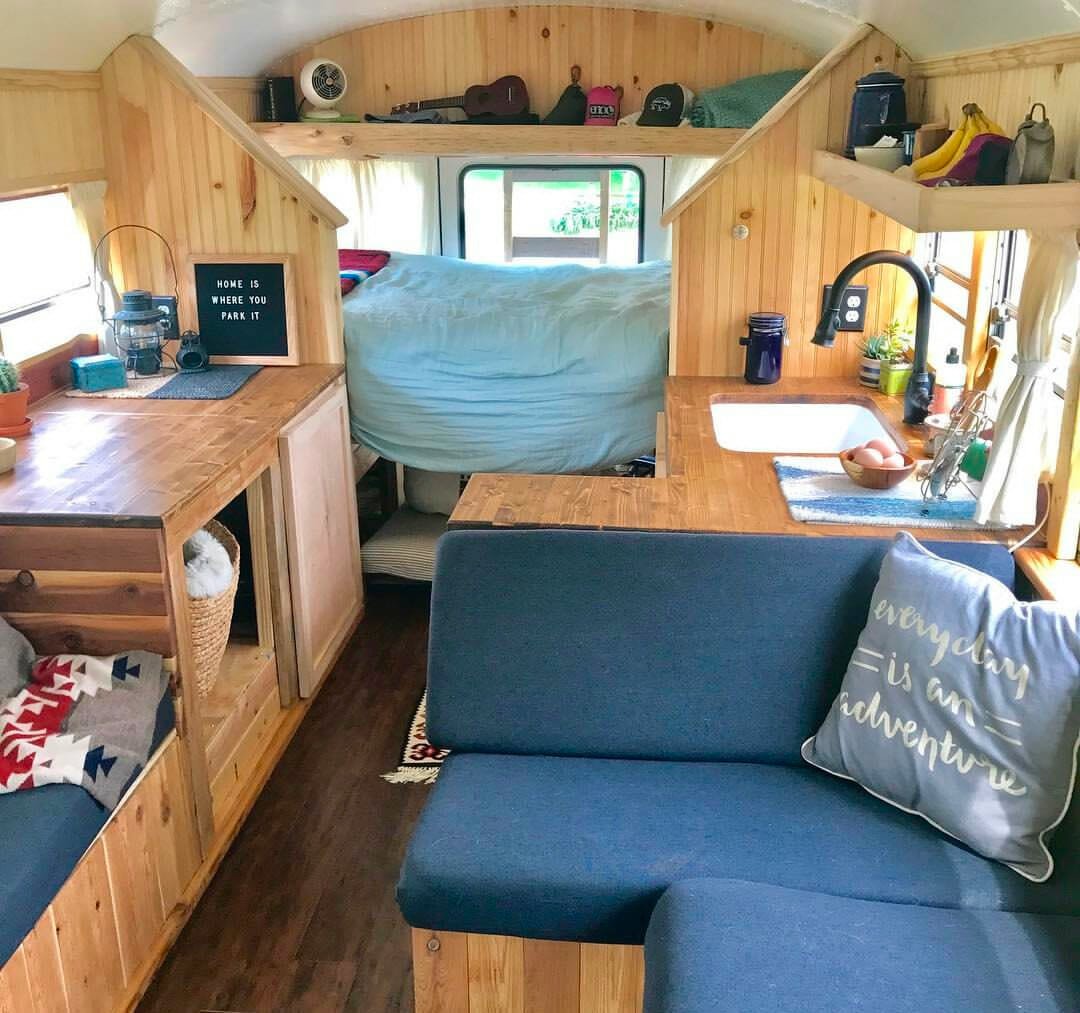Are you dreaming of converting a minibus into your very own mobile home, mobile office, or even a food truck? The process of minibus conversion can be both thrilling and overwhelming, especially for beginners. Whether you're looking to hit the road for getaways or launch a unique business venture, grasping the details of minibus conversion is essential to achieving your goals.
In this guide, we'll cover all you need to know about minibus conversions. From choosing whether to tackle the project as a DIY enthusiast or hire professionals, to gaining knowledge about the essential systems like power, water, and waste management, we've got you covered. We will also go over considerations for various conversion types, such as creating a cozy camper, a mobile medical unit, or even a wheelchair-accessible vehicle. With information on costs, timelines, and frequent mistakes to avoid, you'll be prepared to embark on your converting journey.
Guidelines for Converting a Bus to a Camper Van

The primary step in transforming a minibus to a camper van is to plan your layout and design. Start by reflecting on how you want to utilize the area and what amenities are important for your requirements. Think about where you'll place the sleeping area, kitchen, seating area, and storage solutions. Draw a preliminary plan and make sure to gauge the inside sizes of the minibus so that your schematics are realistic. This step is crucial, as it will direct all following decisions and ensure that your transformation will be practical and satisfying.
Once you have your blueprint, it’s the moment to set up the vehicle for conversion. This includes cleaning the interior, taking out any unwanted chairs or fixtures, and fixing any present problems such as corrosion or technical issues. It could be required to insulate the walls and roof to ensure warmth in different weather conditions. Proper thermal protection is important for energy conservation and comfort during your adventures, so take the effort to select the appropriate materials and approaches for your particular climate.
After get ready the vehicle, you can begin assembling and installing your chosen elements. Begin with the structural components like the sleeping area base, cooking area modules, and any essential cabinetry. Make sure to secure everything properly, as security is paramount. Once the basic structure is in place, focus on electrical and plumbing systems if your layout includes them, such as photovoltaic power installations or a water system. This is where you can observe your vision come to life, transforming your minibus into a operational and comfortable campervan.
Important Features and Layout Configuration
As converting a van into a comfortable and practical camper, choosing the appropriate amenities is vital. Essential facilities include a sleeping area, cooking facilities, and storage solutions. A well-designed layout will maximize the space available, ensuring ease without compromising utility. Think about adding a foldable bed to save space during the day, as well as compact appliances that work within the vehicle's limited footprint while still offering the comforts of home.
Creating the ideal layout requires thoughtful planning. Begin by mapping out the floor space and deciding where key elements like the chairs, cooking area, and toilet will be located. Focus on ease of access and movement; for example, placing the kitchen near the entry can be handy for cooking. Additionally, make utilize vertical space with overhead cabinets and shelves, which help maintain the living area organized and clutter-free. Adding flexible seating that can serve multiple purposes adds to the versatility of the space.
You ought to also consider how the configuration aligns with your lifestyle and travel plans. If you like off-grid adventures, features like photovoltaic systems, extra insulation, and a robust water system must take priority. Alternatively, if you plan to use the minibus for commercial purposes or as a mobile office, make sure there's room for necessary tools and comfortable seating options. By thoughtfully evaluating your needs and desires, you'll create a customized layout that improves your minibus experience.
Legal and Practical Factors
When converting a minibus, it's essential to be aware of the regulatory requirements in your region. Different regions have different regulations regarding vehicle modifications, especially when changing the purpose from people transport to residential use or commercial applications. Begin by checking local laws concerning vehicle categories, safety standards, and emissions standards. переобладнання фургона в пасажирський may be required to re-register your converted minibus in a different manner or obtain specific permits.
Insurance is another important factor to consider. Once you modify a minibus, you will likely need a new coverage policy designed to its altered use, whether that's for camping, a food cart, or another purpose. Contact various insurance providers to discover the best coverage choices and ensure you understand what is required to lawfully drive your converted vehicle. Be ready to provide any documentation related to the modification that may be requested.
Financial planning for your conversion should include not just the physical modifications but also the expenses associated with adhering to regulatory obligations. This may include evaluation fees, registration costs, and legal advice if necessary. Keeping these factors in mind will assist you remain within the law while also ensuring your minibus modification project is fiscally responsible and practical for your requirements.
